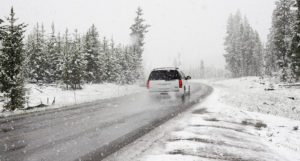Residential neighborhoods have many potential hazards you need to look out for including, dogs, cats, kids, parked cars and, of course, other moving vehicles. Here are a few tips to keep in mind when driving in residential areas:
1. Speed: Proper speed control in residential areas (or in any area) is extremely important for safe driving. The rule for a beginner is to maintain a speed of three to five miles under the posted speed limit (of course the universal rule is to always drive the “conditions”). This precaution prevents you from inadvertent acceleration that would put you over the speed limit and into a potentially hazardous situation.
2. Cover The Brake: It’s important to cover your brake when needed while driving in residential areas in case something quickly appears in the roadway such as a child playing, animals in the street, etc. Always scan the area for these things.
3. Check Mirrors: Check your mirrors every 5-10 seconds and after every maneuver to make sure you know what is around you. Never take your eyes off the roadway for more than one second at a time.
4. Distractions: Never use your phone at any time when you are driving! NEVER!


An important portion of driving school is to present students with material on how to control their vehicle under various weather conditions. With higher chances of rain during the spring season, it’s important to be aware of how much water is on the road when you’re driving. Hydroplaning can be a very sudden and shocking experience. A general explanation of hydroplaning is when the tires of your vehicle lose contact with the road because a thin layer of water gets between the tires and the road surface. This can occur at speeds over 35 miles per hour and when there is a half-inch of water or more sitting on the road surface. Poor tread on the tires can also increase the possibility of hydroplaning.
To avoid hydroplaning, it’s important to follow these tips when it’s raining or the road surface is wet:
-
Reduce vehicle speed before you enter the water on the road surface
-
Never utilize cruise control when the road surface is wet
-
Extend following distance to 4 or more seconds
-
Utilize windshield wipers, and by law, turn on your headlights
-
Check wipers on a regular basis to make sure they don’t smear
If you’re interested in enrolling in any of our driving schools, click on your city below for more information.
Bill Kennedy’s Topeka Driving School
Bill Kennedy’s Drive-Right School of Wichita
Bill Kennedy’s Little Apple Driving School
Bill Kennedy’s Drive Right School of Johnson County

Learning how to drive in adverse weather conditions is a very important part of driver’s ed. At Kennedy Driving School, the academic instruction covers various techniques for driving in the snow and ice. A good defensive driver should know the following rules when driving in these dangerous road conditions.
-
Drive slower and watch out for the other drivers
Reducing the vehicle speed should be the first priority when driving in any hazardous conditions such as rain, sleet, snow, poor visibility, etc. It’s important to “expect the unexpected” when you encounter other vehicles in adverse driving conditions. A lot of drivers don’t even realize they are driving in bad conditions until it’s too late.
-
Increase following distance to at least 4 seconds or more
Using proper following distance can generate the time necessary to view and react safely to any hazardous situation ahead and avoid potential problems.
-
Start braking gradually and early when approaching a stop sign or red light
You’re going to need extra time to stop when driving in hazardous road conditions. Start braking earlier than you normally would to give the vehicle extra time to slow down and avoid sliding.
-
Look at least 12 seconds ahead
Looking ahead can help anticipate hazardous situations and give you the time to react appropriately, before it’s too late.
-
Anticipate the unexpected – be prepared for the other drivers to make mistakes
As mentioned previously, it’s important to watch out for other drivers because they will probably make some mistakes in the adverse driving conditions.
All of these steps should be followed when driving in any adverse road conditions. In our classes we teach these defensive driving techniques in our driving schools located in Johnson County, Wichita, Topeka and Manhattan.
Defensive Driving Tip of The Week